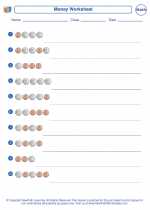Money
Money is a medium of exchange used to facilitate transactions, such as buying goods and services. It comes in various forms, including coins and banknotes. Money is also used as a unit of account, a store of value, and a standard of deferred payment.
In the United States, the basic unit of currency is the dollar, which is divided into 100 smaller units called cents. Commonly used coins include the penny (1 cent), nickel (5 cents), dime (10 cents), and quarter (25 cents). Banknotes, or bills, come in denominations of $1, $5, $10, $20, $50, and $100.
Children can learn about money through activities that involve identifying and counting coins and bills, making change, and understanding the value of different denominations. These activities help develop important math skills, such as addition, subtraction, and understanding place value.
Understanding the concept of money is essential for daily life, as it is used to make purchases, save for the future, and understand the value of goods and services.
Overall, money plays a crucial role in our economy and daily lives, and it is important for children to develop a strong understanding of its various aspects.
[Money] Related Worksheets and Study Guides:
.◂Math Worksheets and Study Guides Kindergarten. Money
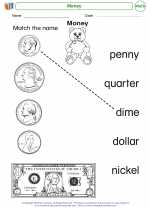
 Coloring Worksheet
Coloring Worksheet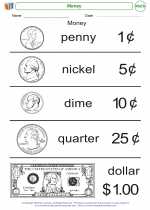
 Worksheet/Answer key
Worksheet/Answer key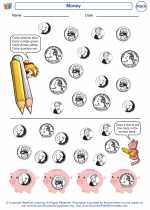
 Worksheet/Answer key
Worksheet/Answer key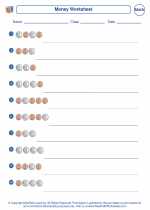
 Worksheet/Answer key
Worksheet/Answer key